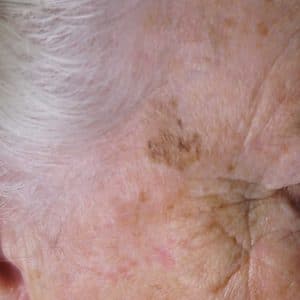Skin Cancers
Skin cancer is the most common cancer in Australia. 80% of all newly diagnosed cancers in Australia are skin cancers. Australia has the highest rate of skin cancer in the world . Skin cancer prevalence rate is 2 to 3 times the rates in Canada, the US and UK.
Cancer results from uncontrolled growth of abnormal cells in the skin. Skin Cancer is predominantly caused by exposure to UV radiation. UV radiation often comes from the sun; it can also come from artificial sources, like arc welders, glue curing lights for artificial nails and solariums.
Skin cancer is the most common cancer in Australia. At least 2 in 3 Australians will be diagnosed with skin cancer before the age of 70. The risk is higher in men than in women. Queensland has the highest rate of skin cancer in the world.
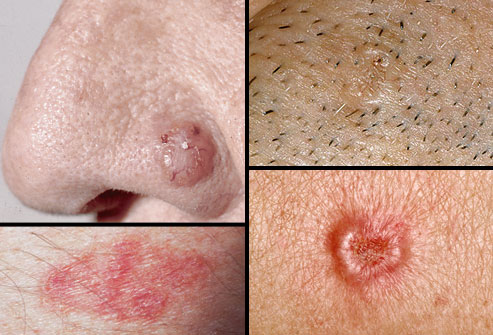
What is the cause of skin cancer?
UV radiation exposure is the cause of around 99% of non-melanoma skin cancers and 95% of melanoma skin cancers in Australia. There are two types of UV radiation that reach the Earth’s surface – UVA and UVB. UV radiation causes sunburn, premature ageing of the skin, eye damage and skin cancer. UV radiation changes the structure of the DNA in the skin cells. Overexposure to UV radiation permanently damages the skin. Sun protection throughout our lives is important, particularly during childhood. UV exposure in childhood greatly increases the chance of getting melanoma later in life because the damaged cells have time to grow and develop into cancer.

Signs of skin cancers
There are three main types of skin cancer: basal cell carcinoma (BCC), squamous cell carcinoma (SCC) and melanoma. Non-melanoma skin cancers (BCC and SCC) are the most common cancer diagnosed in Australia. About one million treatments are given each year in Australia for non-melanoma skin cancers.
Melanoma is the most common cancer in young Australians between 20 and 40 years of age. Each year, more than 3,600 Queenslanders are diagnosed with melanoma—the most serious form of skin cancer. Melanoma can spread rapidly and can be life threatening, if left untreated.
Basal Cell Carcinoma
Basal Cell Carcinoma (BCC) is the most common form of skin cancer and occurs most frequently on sun-exposed regions of the body. BCC makes up about two-thirds of non-melanoma skin cancers. It generally tends to occur in older individuals, although they may occur in young adults and even children. Risk factors for BCC are:
- Chronic sun exposure, especially in people with fair skin, light hair, and blue, green, or grey eyes
- Burns
- Exposure to radiation
- Arsenic intoxication
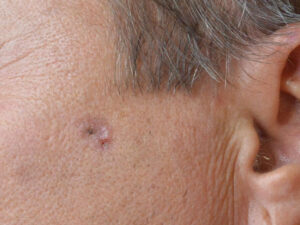
BCC commonly develops on the head, neck and upper body. It may appear as a pearly lump or a scaly or dry area that is pale or pink in colour. BCC may bleed and become inflamed, and dead tissue may slough off (ulcerate). Some BCCs heal then break down again.
BCCs tend to grow slowly and don’t usually spread to other parts of the body. However, if BCC is left untreated or grows larger than 5 cm, it may grow deeper into the skin and damage nearby tissue. This may make treatment more difficult and increase the chance of the BCC returning.
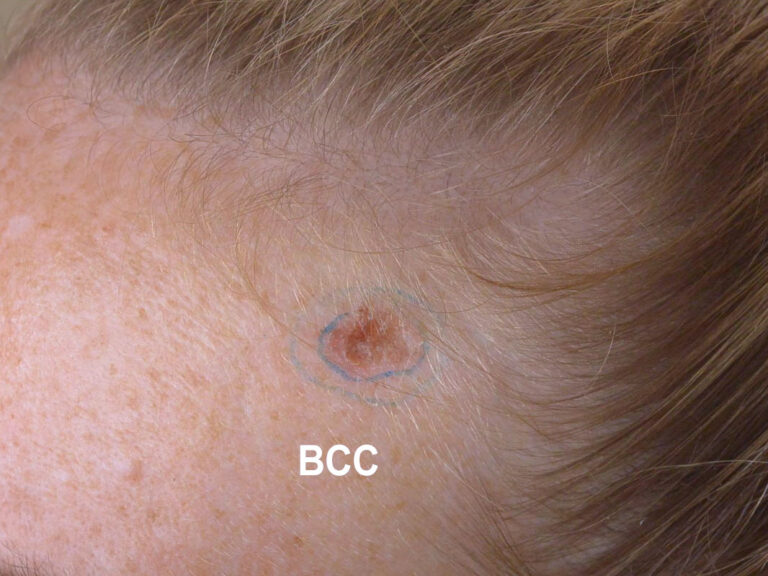
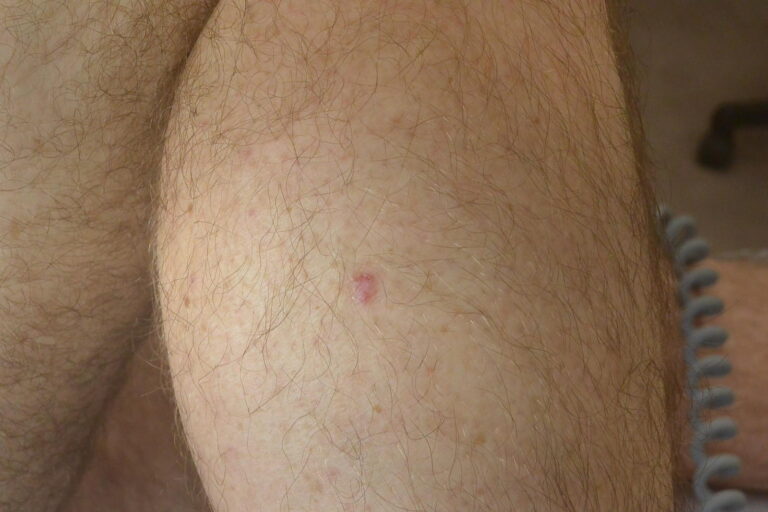
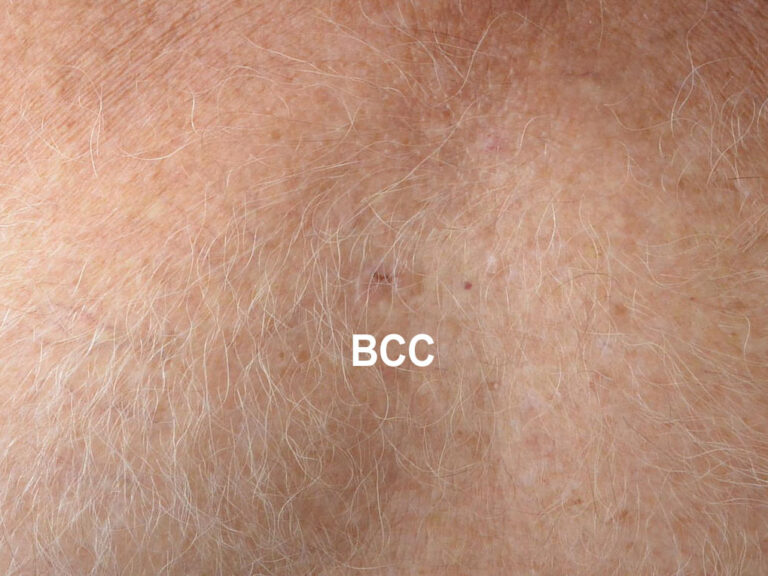
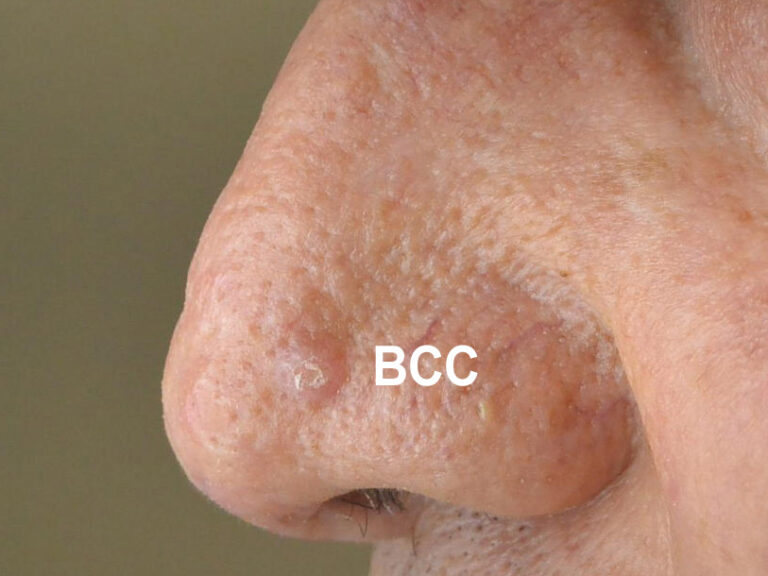
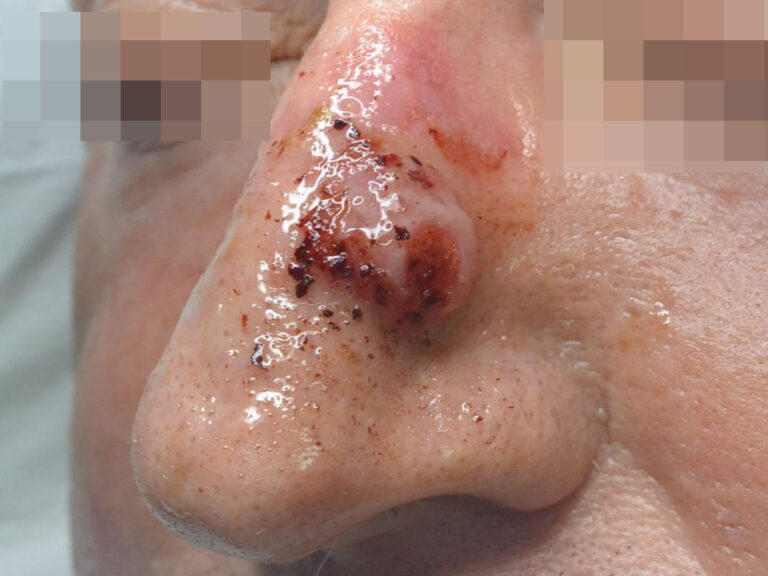
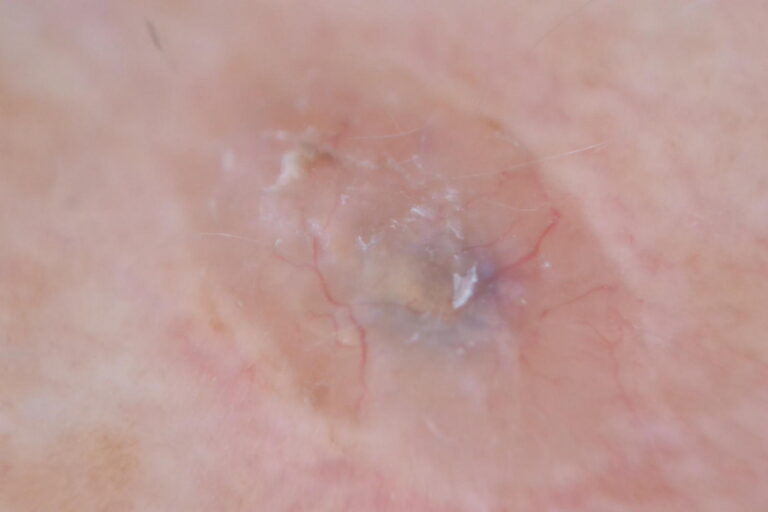
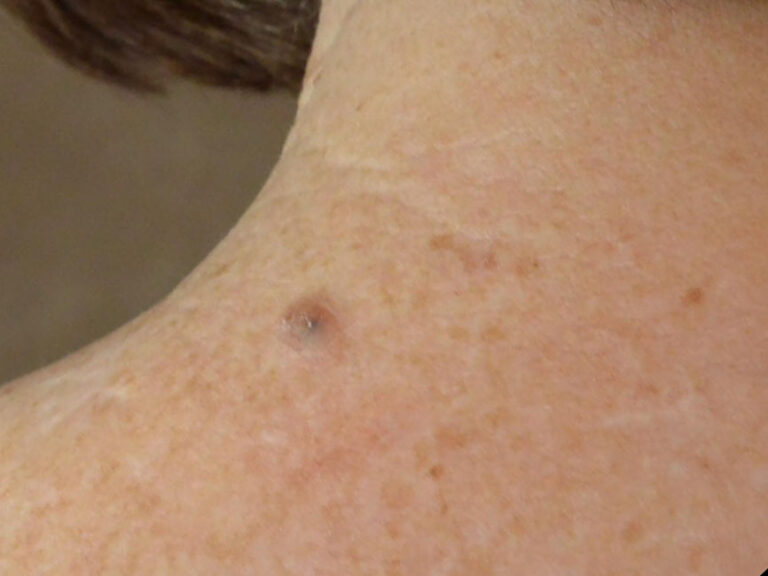
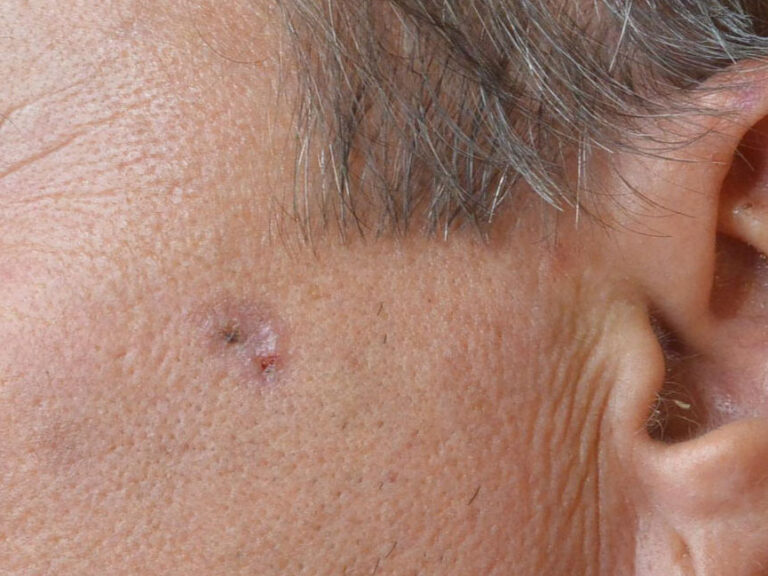
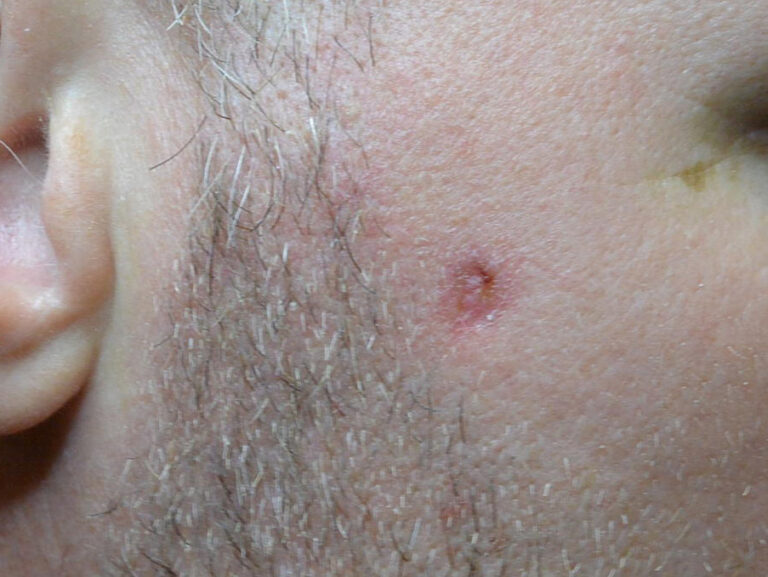
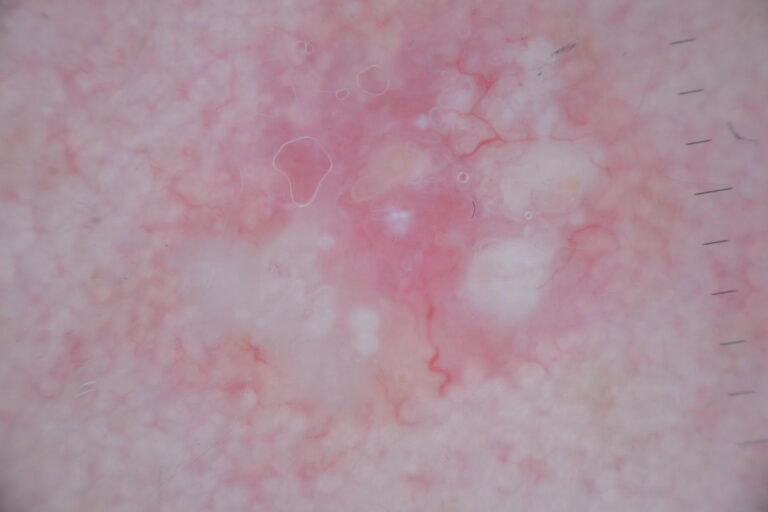
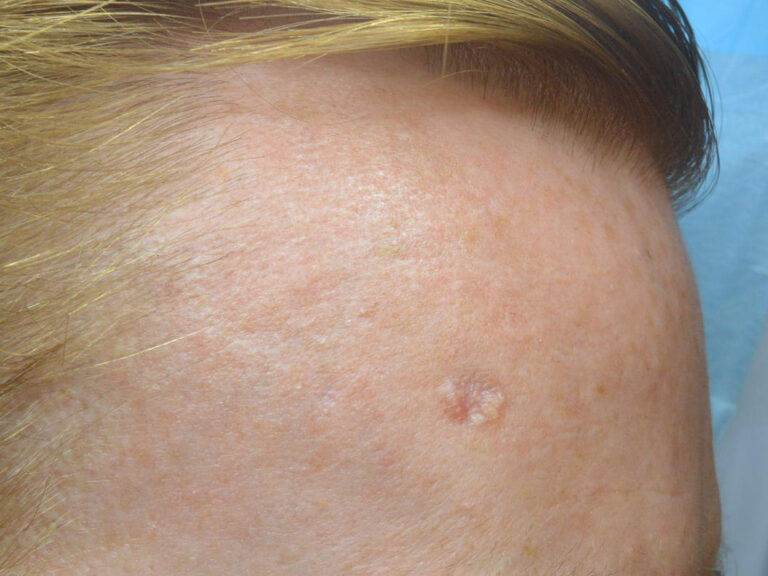
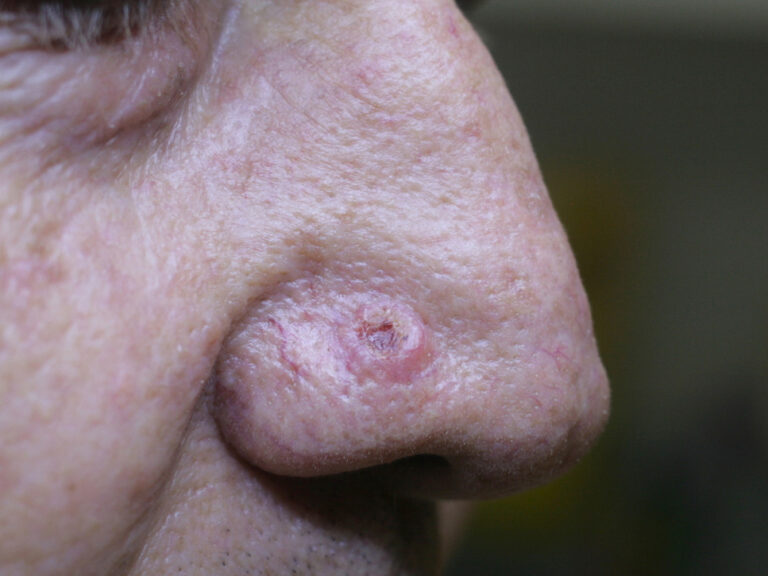
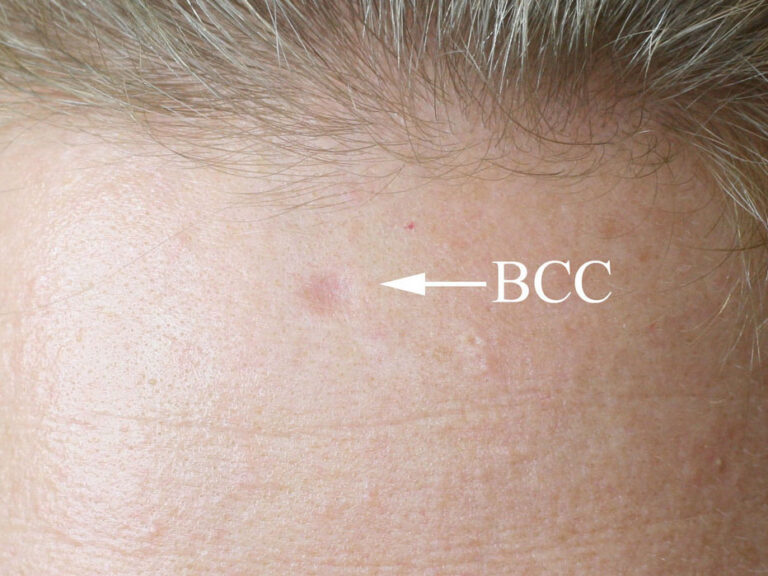
Squamous Cell Carcinoma
Squamous Cell Carcinoma (SCC) is the second most common skin cancer. SCC accounts for about one-third of non-melanoma skin cancers. It arises from the outer epidermal layer of the skin and mucous membranes and occurs most commonly on areas exposed to the sun. If untreated, SCC may penetrate and destroy underlying tissue. Sometimes, this tumor can spread to distant organs and may become fatal.
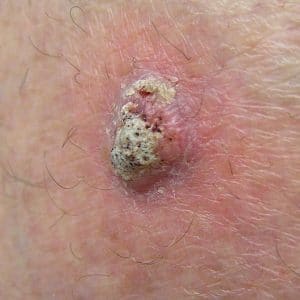
Factors that contribute to the development of squamous cell carcinoma include:
– Chronic sun exposure
– burns
– scars
– exposure to radiation or chemicals
– chronic inflammatory conditions
– immunosuppression
SCC usually appears on areas of the skin that are most often exposed to the sun, such as the head, neck, hands, forearms or lower leg. It often appears as a thickened, red, scaly lump. SCC may look like a sore that hasn’t healed
SCCs tend to grow quickly over several weeks or months. It is possible for SCCs to spread to other parts of the body – SCC on the lips, ears, scalp or temples has a high risk of spreading and should be seen by a doctor immediately.
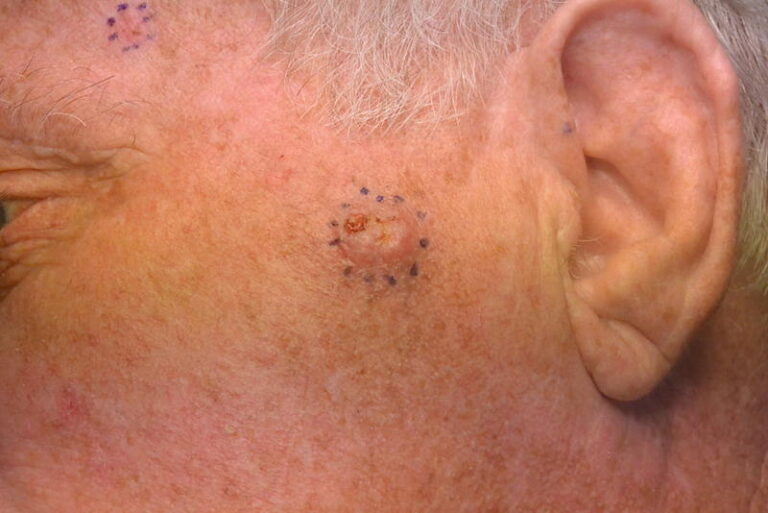
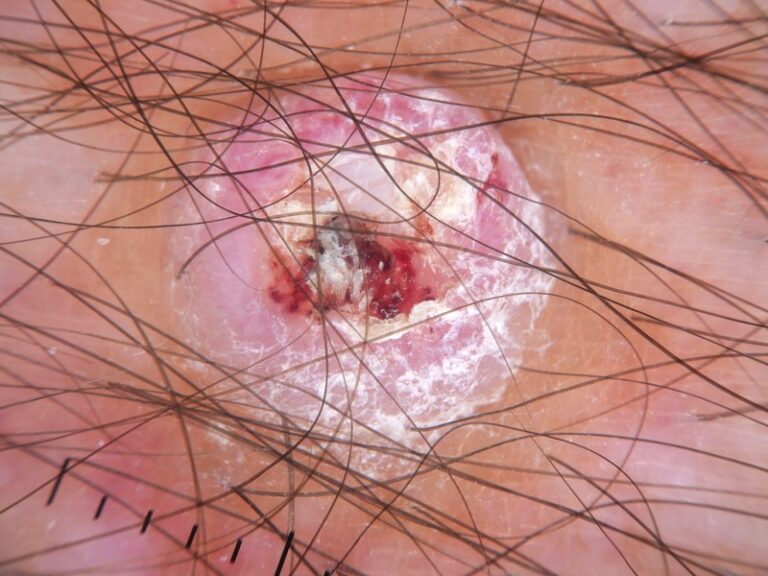
Melanoma
Melanoma is the least common type of skin cancers ( 1-2% of cases) but it is the most dangerous form of skin cancer and can spread rapidly.
Melanoma is characterised by uncontrolled growth of melanocytes. These are the cells in our skin that produce pigment which colour skin, hair and eyes. Melanoma is the most aggressive form of skin cancer.
The most common place for melanoma is on the skin of men’s backs or on women’s legs, however melanoma can occur anywhere on the body, including the head and neck, the skin under the fingernails, and even the soles of the feet or palms of the hands.
Melanoma is treatable if detected early but if the cancer spreads to other parts of the body (metastasises) the prognosis is poor.
- Melanoma represents 2% of all skin cancers, but causes 75% of skin cancer deaths.
- Almost 20000Australians are expected to have been diagnosed with melanoma in Australia in 2022.
- Melanoma can spread rapidly and can be life threatening if left untreated.
- One person every six hours will die from melanoma in Australia.
- Melanoma is the most common cancer in Australian’s aged 15 – 44
- If diagnosed and treated early melanoma is nearly 100% curable
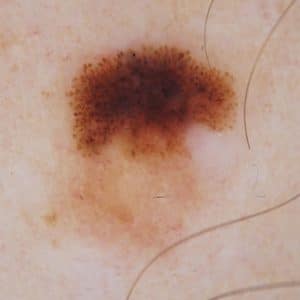
Early detection is important in order to start treatment before it metastasizes. Anyone of any skin colour can develop melanoma, though it is more common in fair-skinned people. A history of sunburns during a young age has been shown to increase the risk of developing this extreme form of skin cancer. Melanoma often has an irregular edge or surface, and it may be blotchy and brown, black, blue, red, white or light grey. Left untreated, a melanoma may spread deeper into the skin where cancer cells can escape and be carried in lymph vessels or blood vessels to other parts of the body.
A common sign of melanoma is a change to the size, shape, or colour of a mole, though not all melanomas develop in or near an existing mole. In some cases, a sudden, new growth on the skin can be melanoma.
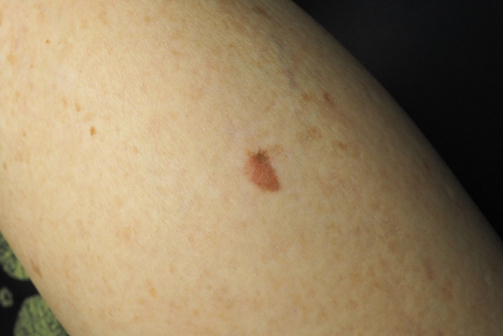
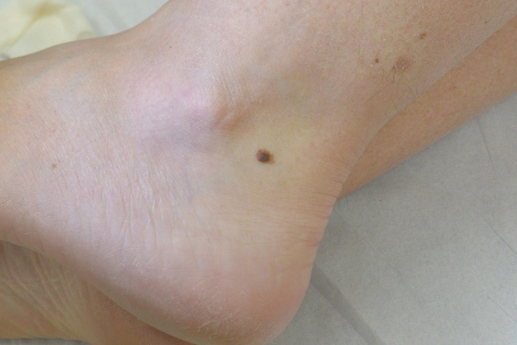
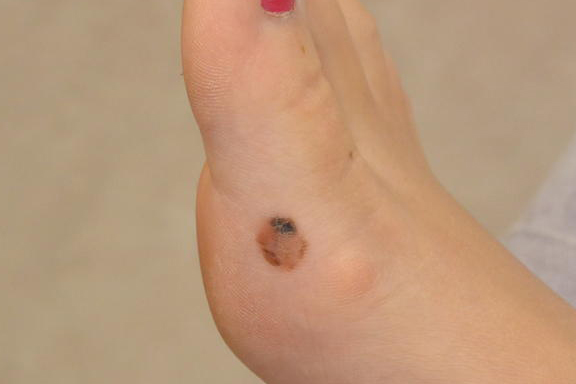
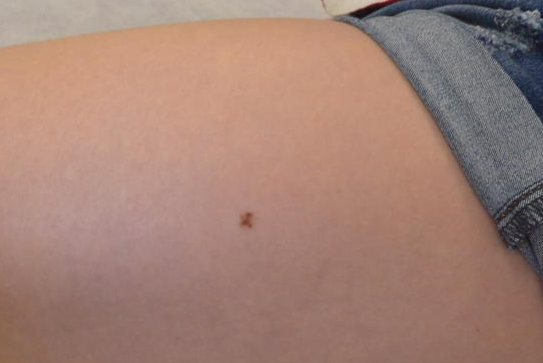
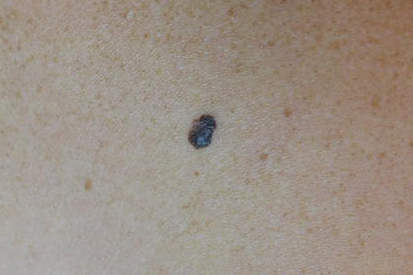
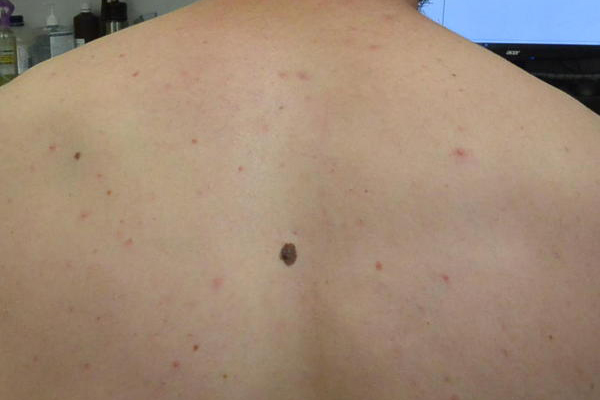
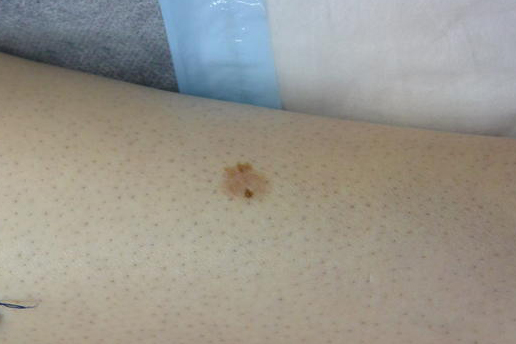
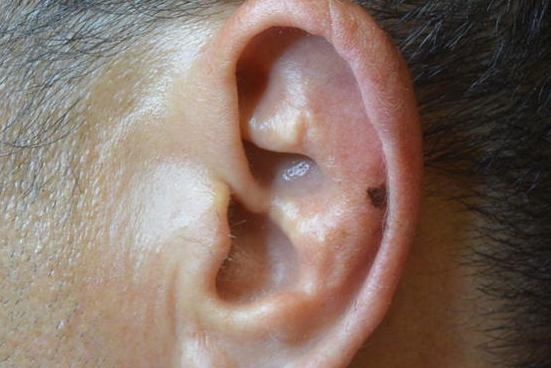
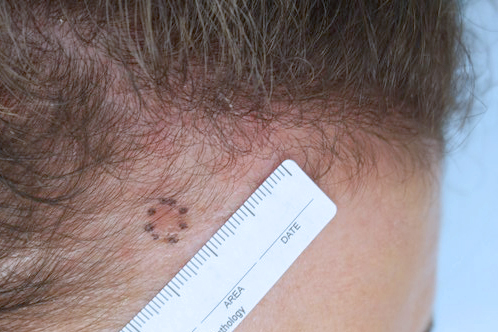
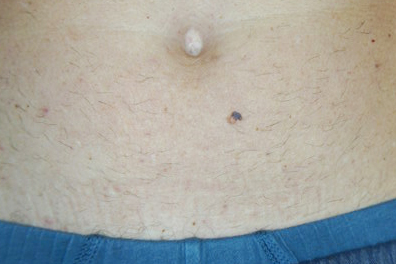
What are the risks factors of melanoma?
- Fair skin that burns easily
- Light hair and light-coloured eyes
- Moles- Particularly if you have 50 to 100 or more and have any unusual or irregular looking moles that are typically larger in size
- History of sunburns or indoor tanning use
- Blood relatives who have had melanoma
- A weak immune system due to disease, organ transplant, or certain medications
- Previous history of melanoma or another skin cancer
- 50 years of age or older
Australia has amongst the highest incidence of skin cancer in the world. 1 in 14 for males and 1 in 22 for females will develop melanoma,
Calculate your melanoma risk
It’s important to get to know your skin. Examining your skin will help you notice changes and learn what is normal for you. Skin cancers that are found and treated early will need less invasive treatment and have a better outcome. Make it a habit to examine over your skin every 3 months.
To calculate your risk of developing skin melanoma you can use this risk calculator tool from Melanoma Institute or Alfred Health.
Different forms of melanoma
- Superficial spreading melanoma: This is the most common form of melanoma representing roughly 70% of all cases. This type of melanoma undergoes a long radial growth phase prior to invading deeper into the skin, reaching the dermis, and posing a threat of distant spread via the blood stream or lymphatic system. They can develop a vertical growth phase over time. Superficial spreading melanomas are typically characterised by a lesion with irregular borders and uneven pigmentation.
- Nodular melanoma: This is the most aggressive form of melanoma as it undergoes no radial growth phase and instead enters a vertical growth phase from the outset. Nodular melanomas have a raised, nodular lesion with irregular patches of colour and an irregular border. About 20% of nodular melanomas may not have any pigment and this can make diagnosis more difficult.
- Lentigo maligna melanoma: The least aggressive melanoma due to its long radial growth phase. Lentigo maligna melanoma is commonly found on older people who have worked in an outdoor occupation. These occur on areas of the body that have received a lot of sun exposure and are therefore most common on the face, ears, neck and head.
- Acral lentiginous melanoma: This type of melanoma is found on the soles of the feet, on the palms or under the fingernails. It is the most common form of melanoma in Asians and black skinned people. it is more aggressive than superficial spreading melanoma and less aggressive than nodular melanoma.


